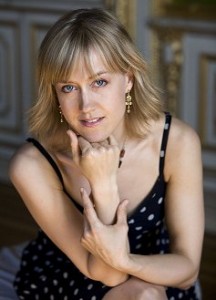At 4dancers we believe that music is a big part of dance, and that the people who conduct it and play it are as much a part of the art form as the dancers themselves. To that end, today we hear from Swedish pianist Anna Buchenhorst, who recently released a CD of ballet music. Learn a little bit about what life is like for her behind the keys…

How did you get involved with playing music for dance?
I was dancing ballet myself from the age of four until eighteen. At that age I choose the piano 100% and it wasn’t until ten years later that I came back into a ballet studio as a pianist. I instantly liked being there!
What do you think the challenges are in terms of playing this type of music?
The challenge is to play helpful music that fits to the steps, and still use beautiful, inspiring music with a big variety. One dancer once told me that she could feel it in her body the whole day, that I had been playing her favorite music for class. That was really nice to hear.
How do you select the music you use for dance?
To me it´s like a sport. Even when I go to the opera, or listen to the radio I can think that this aria, or ballade would be great for an adagio in the middle and so on. I am a collector of great pieces and I want to leave them like they are as much as possible. I also improvise a lot, but not on this record.
What do you like best about playing music for dancers?
To watch the dancers improve, when you pick the right music. It´s functional, fantastic and full of good spirits.
BIO: Anna Buchenhorst is a piano soloist and the full-time ballet pianist of the Royal Swedish Ballet since 2002. She has a repertoire that extends from the baroque to contemporary music, including solo works, chamber music and concertos for piano and orchestra. She has worked together with leading European choreographers and ballet teachers of our time, among them Mats Ek, as well as playing for celebrities such as Mikhail Baryshnikov, John Neumeier and Dame Beryl Grey.
She graduated as a Master of Fine Arts, under Professor Stella Tjajkovski, at the Academy of Music and Drama in Gothenburg.
In the early nineties she received a scholarship from the Swedish Institute enabling her to become a full-time student of the Liszt Academy in Budapest. With Professor Márta Gulyás as her piano teacher, she refined her virtuosic technique and musical insights.




